Quadrant
See: Cartesian coordinate system.
Quadratic equation
The general quadratic equation in one variable is ![]() , for constants
, for constants ![]() and where
and where ![]() .
.
The solutions to this equation (roots) are given by the quadratic formula:

or the equivalent alternative form:

See also: polynomial, monomial, term, constant, coefficient, zero (function)
Quadratic expression
A quadratic expression or function contains one or more of the terms in which the variable is raised to the second power, but no variable is raised to a higher power. Examples of quadratic expressions include ![]() and
and ![]() .
.
Quadratic formula
See: quadratic equation.
Quadrilateral
A quadrilateral is a four-sided polygon. The square is a regular quadrilateral (all sides and angles equal). Other well-known examples of a quadrilateral include the rectangle, the kite and the trapezium. See also: polygon.
Quartile
Quartiles are the values that divide an ordered data set into four (approximately) equal parts. It is only possible to divide a data set into exactly four equal parts when the number of data of values is a multiple of four.
There are three quartiles. The first, the lower quartile (Q1) divides off (approximately) the lower 25% of data values. The second quartile (Q2) is the median. The third quartile, the upper quartile (Q3), divides off (approximately) the upper 25% of data values.
Percentiles are the values that divide an ordered data set into 100 (approximately) equal parts. It is only possible to divide a data set into exactly 100 equal parts when the number of data values is a multiple of one hundred.
There are 99 percentiles. Within the above limitations, the first percentile divides off the lower 1% of data values. The second, the lower 2% and so on. In particular, the lower quartile (Q1) is the 25th percentile, the median is the 50th percentile and the upper quartile is the 75th percentile.
See also: interquartile range (IQR)
Quotient
A quotient is the result of dividing one number or algebraic expression by another.
See also: division, remainder.
R
Radian
A radian is a measure of angle where one revolution of a unit circle from a fixed point corresponds to ![]() radians. Thus, as a measure of angle, 180 degrees is equivalent to π radian, hence 1 radian is exactly
radians. Thus, as a measure of angle, 180 degrees is equivalent to π radian, hence 1 radian is exactly ![]() degrees or approximately 57.3 degrees.
degrees or approximately 57.3 degrees.
See also: degrees, pi
Radius
In the circle below, the line segment OA (interval OA) is called a radius of the circle.
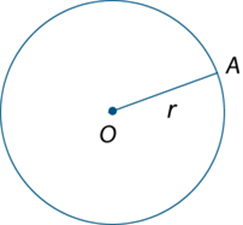
See also: circle
Random
A random (chance) event is an event that is not predictable.
Random number
A random number is one whose value is governed by chance; for example, the number of dots showing when a fair die is tossed. The value of a random number cannot be predicted in advance.
Random number generator
A true random number generator will produce random numbers based on some natural random physical process (for example, radioactive decay).
The ![]() digit of the decimal expansion of a rational number is not random since these numbers can be predicted in advance. Selecting an arbitrary sequence of digits in the decimal expansion of an irrational real number can be used as a random number generator since the decimal expansion have no repetition. For example, the decimal expansion of pi,
digit of the decimal expansion of a rational number is not random since these numbers can be predicted in advance. Selecting an arbitrary sequence of digits in the decimal expansion of an irrational real number can be used as a random number generator since the decimal expansion have no repetition. For example, the decimal expansion of pi, ![]() , could be used for this purpose.
, could be used for this purpose.
Pseudo-random numbers are computer-generated random numbers found using an algorithm.
See also: random number.
Random sample
A subset of the population chosen such that every element of the population has an equal chance of being selected (that is, their selection is governed by chance). A random number generator, for example, could be used to select this random sample.
See also: random, random number generator.
Random variable
A random variable ![]() is a function that assigns real numbers to events. See also: random, variable, sample space, real number, event.
is a function that assigns real numbers to events. See also: random, variable, sample space, real number, event.
Range (relation)
A relation is a correspondence between two sets. When one of the sets is specified as the set of elements to which the correspondence is made, this set is called the co-domain of the relation. The subset of the co-domain to which elements of the domain are actually matched up, is called the range of the relation.
For example, if a correspondence is formed between the students in a class and their favourite colour, the students would be a natural choice for the domain of relation. The range corresponds to the actual set of favourite colours of the students. The co-domain is the set of all possible colours, not just the favourites of the class of students.
The range of a relation is, in general, a subset of its co-domain. See also: domain.
Range (statistics)
The range is the difference between the largest and smallest observations in a data set.
The range can be used as a measure of spread in a data set. It is sensitive to outliers and should be interpreted with care.
For example, for the set of data {2, 3, 4, 5, 6, 10, 12}, the range is ![]()
Rate
A rate compares two quantities measured in different units. For example, the ratio of distance to time, known as speed, is a rate because distance and time are measured in different units (such as kilometres and hours). The value of the rate depends on the units in which the quantities are expressed.
Ratio
A ratio compares magnitudes of sets, quantities of the same kind or algebraic expressions. It is often used as a comparison ![]() of the size of two (or more) quantities relative to each other. For example, the ratio of the length of a side of a square to the length of a diagonal is
of the size of two (or more) quantities relative to each other. For example, the ratio of the length of a side of a square to the length of a diagonal is ![]() that is,
that is, ![]() . See also: fraction.
. See also: fraction.
Rational number
An element of the infinite set of numbers Q = { ![]() , where
, where ![]() and
and ![]() are integers and
are integers and ![]() is not equal to zero}.
is not equal to zero}.
Rational numbers may be expressed in fraction form, either with a corresponding terminating decimal expansion, or with an infinite recurring decimal expansion. For example, both ![]() and
and ![]() = 0.444… are rational numbers.
= 0.444… are rational numbers.
Rational numbers may be positive or negative. For example, −17/5 is also a rational number.
See also: fraction, positive integer
Ray
A ray comprises a half-line extending in one direction from a point, which is called the endpoint or vertex of the ray as shown below. Intuitively, the notion of a ray corresponds to the visual image of rays of light emanating from a source represented as a point.
A point on a straight line divides it into two half-lines, each of which corresponds to a ray:
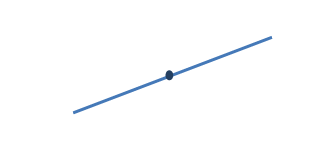
A ray may include an arrow to indicate direction. See also: line segment, ray, vertex.
Real numbers
The numbers generally used in mathematics, in scientific work and in everyday life are the real numbers. Real numbers are any of the elements of the infinite set R, which comprises the union of the set of rational numbers with the set of irrational numbers. A rational real number has either a terminating (finite) decimal expansion, such as ![]() , or an infinite recurring decimal expansion, for example,
, or an infinite recurring decimal expansion, for example, ![]()
Some well-known irrational real numbers are the square root of 2 (![]() ), pi (
), pi (![]() ), and the golden ratio, phi (
), and the golden ratio, phi (![]() ). These can be used in exact calculations, for example
). These can be used in exact calculations, for example ![]() or
or ![]() .
.
Often rational approximations to irrational real numbers are used in arithmetic calculations, with a suitable accuracy for the purpose of computation, for example ![]() and
and ![]() , correct to 3 decimal places.
, correct to 3 decimal places.
All real numbers can be expressed using an infinite decimal expansion, for example, the natural number two can be written as either: 2 = 1.9999999999… or 2 = 2.0000000000…
The set of real numbers, R, includes the natural numbers, N, integers, Z, rational numbers, Q and irrational numbers, Q′ as proper subsets, illustrated in the Venn diagram below:
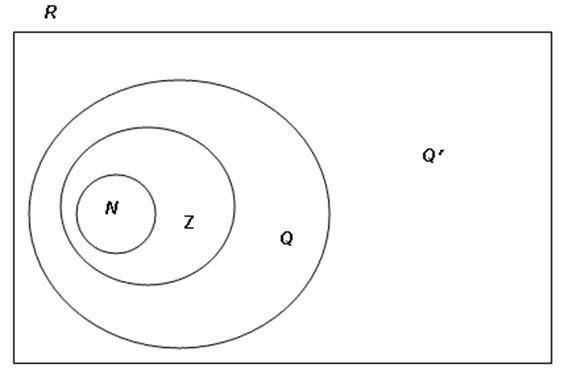
The real numbers are often represented using the infinite set of points on a continuous geometric line. This representation is referred to as the real number line. A one-to-one correspondence between the set of real numbers and the infinite set of points on the line is taken as given, with a specific point, O (the origin) selected to correspond to zero. A point X to the right of O is taken to correspond to the positive real number x, where the magnitude of x measures the length of the line segment OX. The point X′ to the left of O located by the endpoint of the line segment OX after a half-turn rotation about O, corresponds to the real number -x:

Compass and unmarked straight-edge constructions can be used to determine the exact location of any rational number and some irrational numbers. For example,![]() on the real number line.
on the real number line.
See also: irrational number, rational number, number line.
Rectangle
A rectangle is a quadrilateral in which all angles are right angles.

See also: angle, polygon.
Rectangular hyperbola
See: hyperbola.
Reciprocal
The reciprocal of a real number ![]() is the multiplicative inverse, that is
is the multiplicative inverse, that is ![]() or
or ![]() , provided
, provided ![]() is non-zero. For example, the reciprocal of 3 is
is non-zero. For example, the reciprocal of 3 is ![]() . Note that the reciprocal of zero is undefined since
. Note that the reciprocal of zero is undefined since ![]() is undefined. See also: inverse.
is undefined. See also: inverse.
Recurring decimal
A recurring decimal is a decimal that contains a pattern of digits that repeats indefinitely after a certain number of places. For example, ![]() , which is the decimal expansion of the rational number:
, which is the decimal expansion of the rational number:

Every recurring decimal is the decimal expansion of a rational number.
See also: rational number.
Recursion
Recursion is the process of carrying out the current step of a process using the results of the previous step (or steps) of the same process. For example, the sequence of numbers
{3, 6, 12, 24, … } can be described using recursion as ‘start at 3 and make the next term in the sequence twice the previous term in the sequence’.
Students often intuitively define sequences using recursion. Skip-counting by ‘counting by fives starting from 12’ is an example of a recursive process. See also: sequence, skip counting.
Reflection
A reflection is a transformation of the plane where each point in the plane is reflected in a given mirror line. To reflect the point A in an axis of reflection, a line has been drawn at right angles to the axis of reflection and the point A′ is marked at the same distance from the axis of reflection as A, but on the other side.
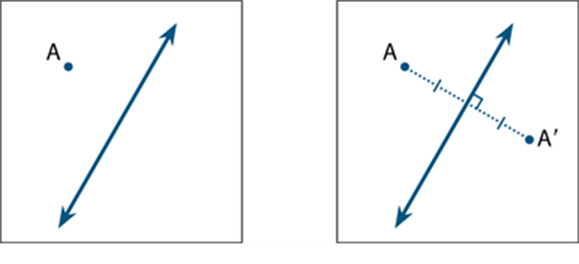
The point A′ is called the reflection image of A. A reflection, then, is a transformation that moves each point to its reflection image. The points on the mirror line are invariant (unchanged) under this transformation. See also: image (geometry).
Reflex angle
See: angle
Regular polygon (shape)
See: polygon.
Related denominators
Denominators are related when one is a multiple of the other. For example, the fractions ![]() and
and ![]() have related denominators because 9 is a multiple of 3.
have related denominators because 9 is a multiple of 3.
Fractions with related denominators are often more easily added and subtracted than fractions with unrelated denominators. For example, to add ![]() and
and ![]() , we know the equivalent fraction of
, we know the equivalent fraction of ![]() is
is ![]() , so we can then compute
, so we can then compute ![]() .
.
See also: fraction, equivalent fraction.
Relation
A relation is a correspondence (map) between the elements of two sets. For example, the relation ‘has the favourite colour’ between the set of students in a class (the domain of the relation) and the set of colours (the co-domain of the relation).
A relation can be represented as a set of ordered pairs, a map (arrow diagram) or a graph.
See also: domain, graph, correspondence.
Remainder
If ![]() and
and ![]() are two natural numbers with
are two natural numbers with ![]() greater than
greater than ![]() , such that
, such that ![]() where
where![]() and
and![]() are also natural numbers, then
are also natural numbers, then![]() is said to be the remainder of
is said to be the remainder of ![]() on division by
on division by ![]() . For example, if
. For example, if ![]() = 29 and
= 29 and![]() = 6, then
= 6, then ![]() = 4 ×
= 4 × ![]() + 5, so the remainder of 29 on division by 6 is 5.
+ 5, so the remainder of 29 on division by 6 is 5.
More simply, a remainder is the amount left over when one number or algebraic quantity ![]() is divided by another
is divided by another ![]() . If
. If ![]() is divisible by
is divisible by ![]() then the remainder is 0. For example, 66 is divisible by 11 because the remainder is 0 (since
then the remainder is 0. For example, 66 is divisible by 11 because the remainder is 0 (since ![]() ). However, when 68 is divided by 11, the remainder is 2, because 68 can be expressed as
). However, when 68 is divided by 11, the remainder is 2, because 68 can be expressed as ![]() . So, 68 is not divisible by 11. See also: divisibility, remainder, factor.
. So, 68 is not divisible by 11. See also: divisibility, remainder, factor.
Response variable
See: variable.
Revolution (angles)
A full-turn, or one revolution, is the amount of turn required to rotate a ray about its endpoint until the image ray first coincides with the original ray. The measure of 1 revolution is 360 degrees, written 360°, or 2π radians.

See also: radian, degree.
Rhombus
A rhombus is a quadrilateral with all sides being equal.
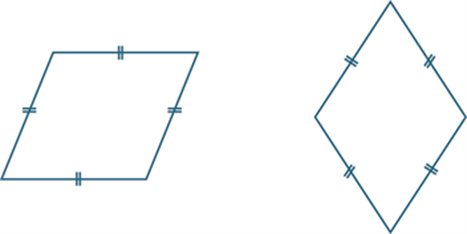
See also: polygon, quadrilateral.
Right angle
An angle with an angle measure of 90°, or one-quarter turn of a full revolution (360°). If two lines are at a right angle, they may also be referred to as being perpendicular. Examples of some right angles are below:
![]()

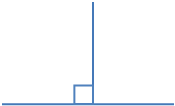
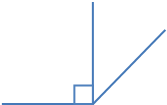
See also: revolution, perpendicular, angle.
Rotation
A rotation is a transformation where each point in the plane is rotated through a given angle about a fixed point (the point of rotation). A rotation turns a figure about a fixed point, called the centre of rotation.
A rotation is specified by:
In the first diagram below, the point A is rotated through 120o clockwise about O. In the second diagram, it is rotated through 60° anticlockwise about O.
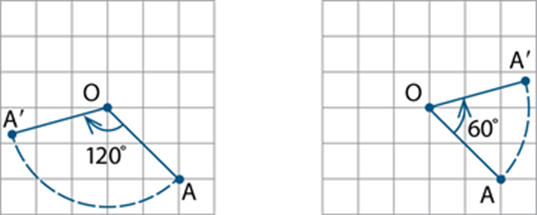
A rotation is a transformation of the plane that moves each point to its rotation image. The centre of rotation is invariant under this transformation. See also: transformation.
Rounding
The process for approximating a value that lies between two known values by one of these values. In particular, when a measure lies between two of the smallest marks on a scale it is rounded to the nearest value represented by either one of these marks.
Rounding is used to specify a number correct to a given accuracy. With measurements this often means rounding a decimal number.
The decimal expansion of a real number is rounded when it is approximated by a terminating decimal that has a given number of decimal digits to the right of the decimal point.
Rounding to ![]() decimal places is achieved by removing all decimal digits beyond (to the right of) the
decimal places is achieved by removing all decimal digits beyond (to the right of) the ![]() digit to the right of the decimal place and adjusting the remaining digits where necessary.
digit to the right of the decimal place and adjusting the remaining digits where necessary.
Rounding of decimals may also be achieved by rounding to the place value (e.g. tenths, hundredths). 16.29 rounded to the nearest tenth of a unit is 16.3, rounded to the nearest unit is 16, rounded to the nearest five is 15, and rounded to the nearest ten is 20. The decimal number 57.139 rounded to the nearest hundredth is 57.14 and rounded to the nearest tenth is 57.1. However, 57.199 rounded to the nearest hundredth is 57.200.
Some general principles for rounding are:
It should be noted that several different conventions for rounding a last digit of 5 can be found in the literature, and these relate to different contexts for number computation. In school mathematics, last digits 1, 2, 3 and 4 ‘round down’, and last digits 5, 6, 7, 8 and 9 ‘round up’.
Rational Fraction
See: algebraic fraction
S
Sample
A sample is a subset of a population. For example, a set of people used for a newspaper survey is a sample of the population.
A random sample is one which is obtained by using a random process for selecting a sample. Samples are used to estimate characteristics of the population. For example, a randomly selected group of eight-year old children (the sample) might be selected to estimate the incidence of tooth decay in eight-year old children in Australia (the population).
See also: population.
Sample space
A sample space is the set of all possible outcomes of a chance experiment. For example, the set of outcomes (also called sample points) from tossing two heads is { HH, HT, TH, TT }, where H represents a ‘head’ and T a ‘tail’. See also: probability.
Scale
Scale specifies proportion between two measures. For example, a model of a house may be made on a 1: 10 scale of length.
Scale (measuring scale)
A measuring scale for weight could be based on the extension of a spring in proportion to the mass of an object (each 500 grams could cause an extension 5 cm). The tick marks on the axes of a graph are specified according to some scale, for example each mark along the horizontal axis might correspond to 5 units, while each mark along the vertical axis might correspond to 2 units. These are then referred to as axes scales.
Scatterplot
A scatterplot is a visual representation of bivariate numerical data. One numerical variable (the independent variable) is measured along the ![]() -axis, the other (the dependent variable) along the
-axis, the other (the dependent variable) along the ![]() -axis. Each data point is represented as a coordinate in the plane corresponding to the value it takes for each of the independent and dependent variables.
-axis. Each data point is represented as a coordinate in the plane corresponding to the value it takes for each of the independent and dependent variables.
For example, selected biometric data recording the circumference around a number of Douglas fir trees in the US, and their heights, is recorded below:
Tree circumference (m) |
Height (m) |
6.65 |
72.92 |
4.93 |
65.76 |
2.22 |
28.94 |
1.97 |
37.13 |
2.85 |
40.92 |
2.84 |
38.59 |
1.24 |
36.21 |
2.23 |
38.92 |
2.45 |
42.48 |
9.09 |
78.01 |
Data from http://whatcom.edu/student-services/tutoring-learning-center/online-math-center/resources/real-data
The scatterplot of these data, with circumference chosen as the independent variable is:
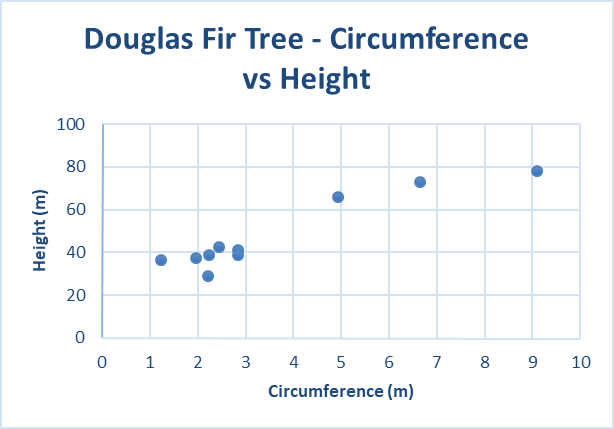
See also: numerical data, bivariate data.
Scientific notation
Scientific notation, or standard form, is the notation used in particular to express very small or very large numbers in the form of the product of a decimal number between 1 and 10 (not inclusive) with an integer power of 10 expressed in exponential form.
For example, in scientific notation:
![]() and
and ![]() .
.
Some technology displays will show these as ![]() and
and ![]() –5
–5 ![]() .
.
Source: https://victoriancurriculum.vcaa.vic.edu.au/LearningArea/LoadFile?learningArea=mathematics&subject=mathematics&name=Mathematics%20Glossary.docx&storage=Glossary
Web site to visit:ttps://victoriancurriculum.vcaa.vic.edu.au
Author of the text: indicated on the source document of the above text
If you are the author of the text above and you not agree to share your knowledge for teaching, research, scholarship (for fair use as indicated in the United States copyrigh low) please send us an e-mail and we will remove your text quickly. Fair use is a limitation and exception to the exclusive right granted by copyright law to the author of a creative work. In United States copyright law, fair use is a doctrine that permits limited use of copyrighted material without acquiring permission from the rights holders. Examples of fair use include commentary, search engines, criticism, news reporting, research, teaching, library archiving and scholarship. It provides for the legal, unlicensed citation or incorporation of copyrighted material in another author's work under a four-factor balancing test. (source: http://en.wikipedia.org/wiki/Fair_use)
The information of medicine and health contained in the site are of a general nature and purpose which is purely informative and for this reason may not replace in any case, the council of a doctor or a qualified entity legally to the profession.
The texts are the property of their respective authors and we thank them for giving us the opportunity to share for free to students, teachers and users of the Web their texts will used only for illustrative educational and scientific purposes only.
All the information in our site are given for nonprofit educational purposes